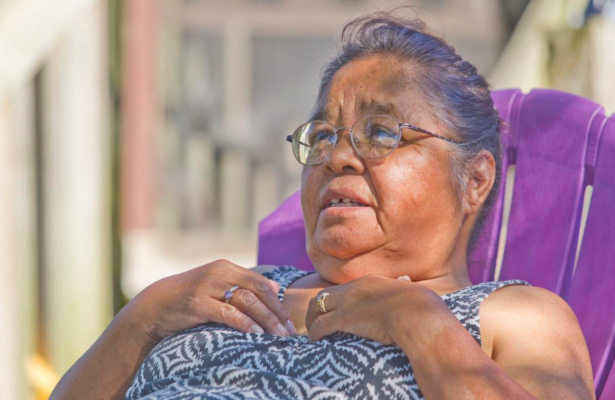‘Water is Life’: Record-Eagle testing project uncovers PFAS in Indigenous household wells
By Sierra Clark and Sheri McWhirter | Record Eagle | January 31, 2021

Read the full article by Sierra Clark and Sheri McWhirter (Record Eagle)
“GRAWN — Sharon Edgington said she has lived in some pretty ‘crummy’ places.
That’s why she, a Grand Traverse Band of Ottawa and Chippewa Indians citizen, decided to buy a nice house in Grawn, for her late mother, Helen Antoine, so she could live out her days in peace.
The house’s water didn’t seem to have any issues, ran from the tap clear, and never tasted or smelled peculiar. She said they felt it was safe because it was from a well and routed through a good filtration process.
But Edginton, 69, eventually wondered whether her water may have been affected by a fire that broke out at a scrap tire facility in Grawn in the mid-1990s which firefighters battled in part with the use of chemical-laden foam. So when the opportunity arose to screen her water for PFAS chemicals for free, she took it.
Water testing
The nonprofit Institute for Journalism and Natural Resources awarded a 2020 Environmental Justice Reporting Award and grant funds for a proposed Traverse City Record-Eagle project: test drinking water from private wells in Indigenous households to screen for PFAS substances, considered emerging contaminants by state and federal environmental regulators.
There are thousands of PFAS chemicals, the acronym for per- and polyfluoroalkyl substances, widely used for decades in manufacturing and for commercial purposes. The artificial compounds made Teflon non-stick, raincoats waterproof and firefighting foam ideal to extinguish liquid fuel fires.
Through long-running and widespread use, PFAS substances made their way into the environment and only in recent years have been realized as pollutants. When consumed, PFAS are known to bio-accumulate in human bodies and lead to certain cancers, hormonal disruptions, fertility problems and other effects on the immune system, according to the U.S. Environmental Protection Agency.
The Record-Eagle began its first round of screenings in June, followed by secondary analysis at a certified laboratory in October. Final results showed trace levels of PFAS chemicals in drinking water at three of the eight homes involved in the project.
Pace Analytical Services, considered among the top PFAS testing laboratories in the U.S., reported water screenings from two homes sampled in Grand Traverse County returned positive results for PFAS, along with one home in Manistee County.
The levels detected in samples taken from those three homes were trace — low enough that not all laboratory equipment can accurately measure them. The only PFAS level found above 1 part per trillion — equivalent to a grain of sand in an Olympic-sized swimming pool — came from a home in the Interlochen area.
Dale Chandler, tribal member with the Little River Band of Odawa Indians, and his partner Dane Morse, lived in the Duck Lake and Green Lake community for more than 20 years.
The couple wondered about getting their water tested for PFAS because of the history of DDT used around the lakes in the 1950s and ‘60s, plus living in close proximity to an old dumping site. They wanted to make sure their water was safe, so they opted to participate in the testing project.
After the first round of results, Chandler said he called the state’s PFAS hotline but it was not a helpful experience. He was told to have his tribe perform another test, he said.
‘I was disappointed that the state was trying to pass it on to my tribe to do (a) second test,’ Chandler said, arguing that should be the state’s responsibility.
While Chandler and Morse waited for the second round of testing in the Record-Eagle project, they started to buy bottled water out of fear they were consuming contaminated water.
Chandler said not only did the state not offer any guidance, the local health department didn’t offer much support either, which caused a bit of a panic in his neighborhood.
Eventually three neighbors opted to get their well water tested for PFAS, all of which Chandler said came back negative.
But now he and his partner are more confused with unanswered questions to the state, but feel reassured with their neighbor’s negative results as an indication that theirs, too, must be safe…”
This content provided by the PFAS Project.
Location:
Topics: